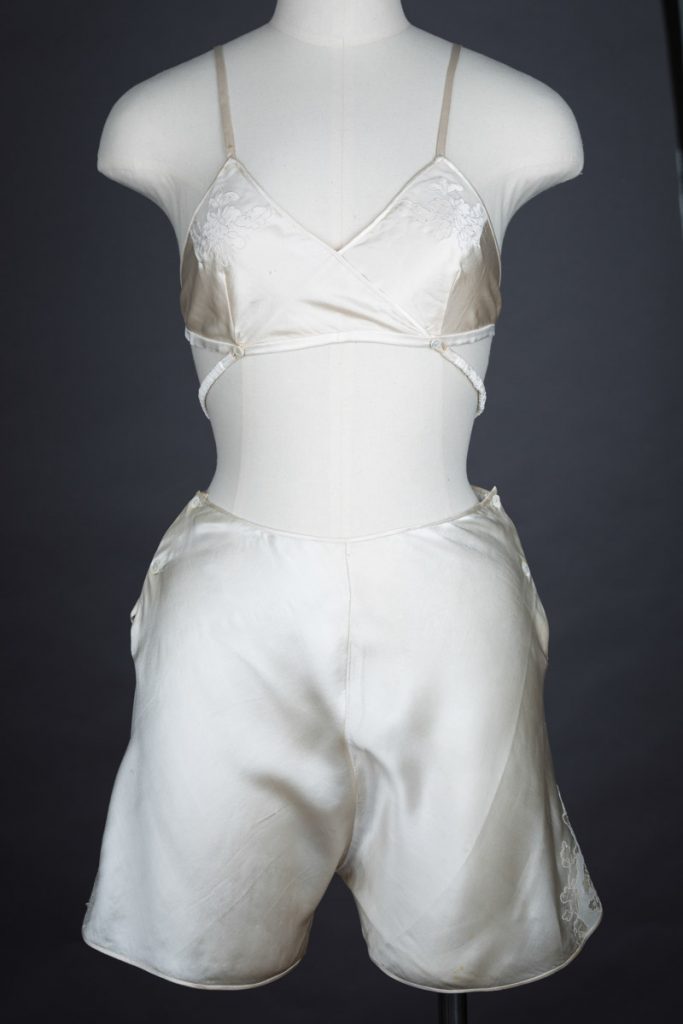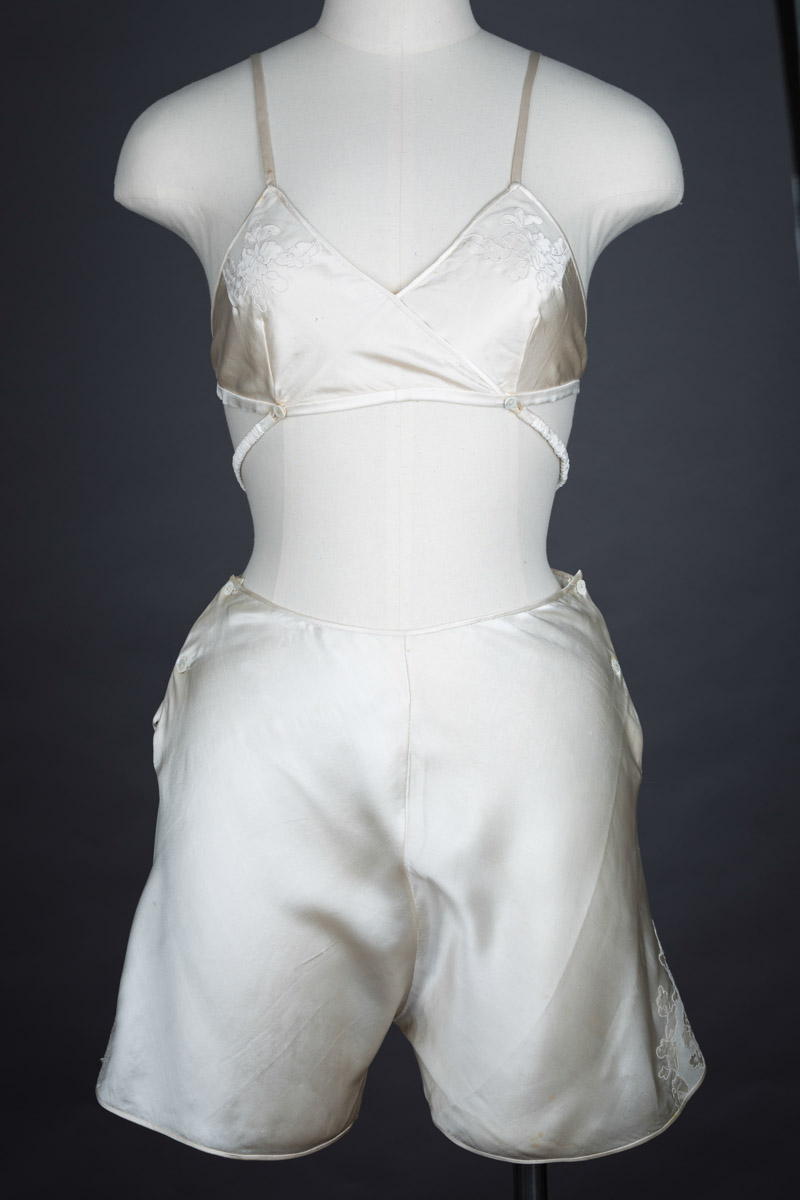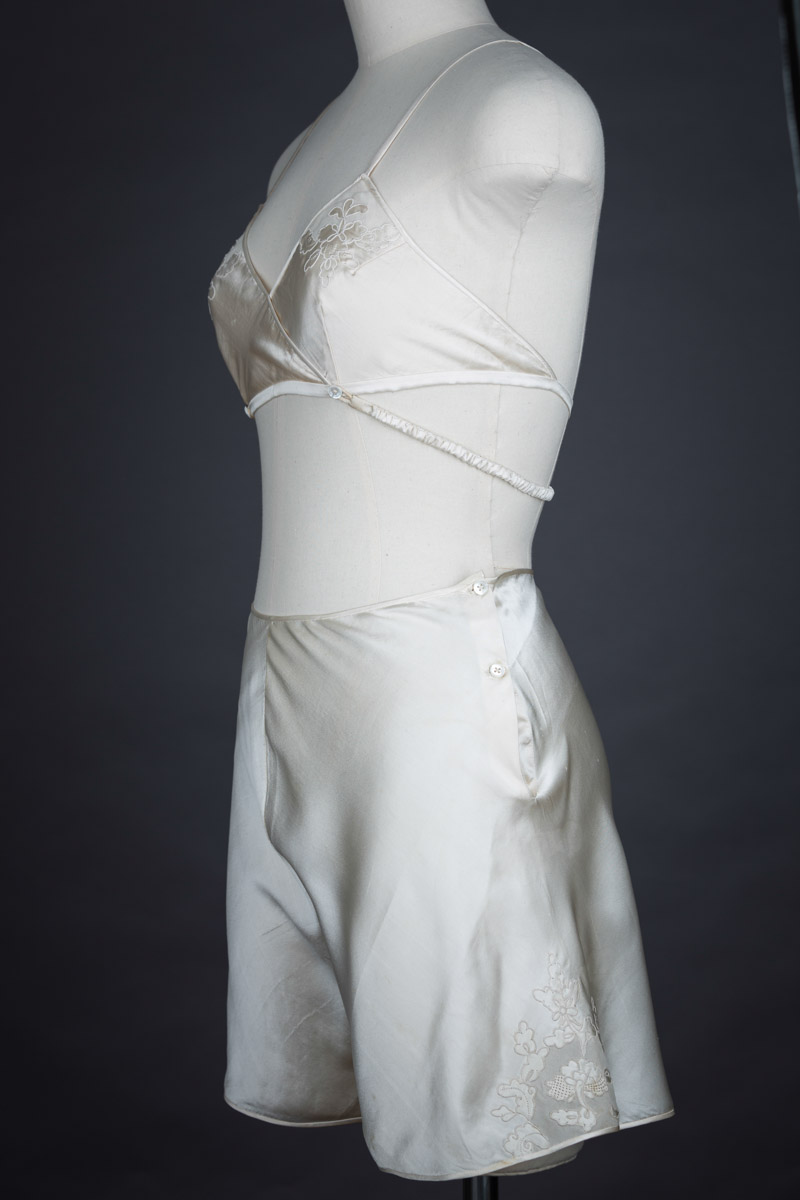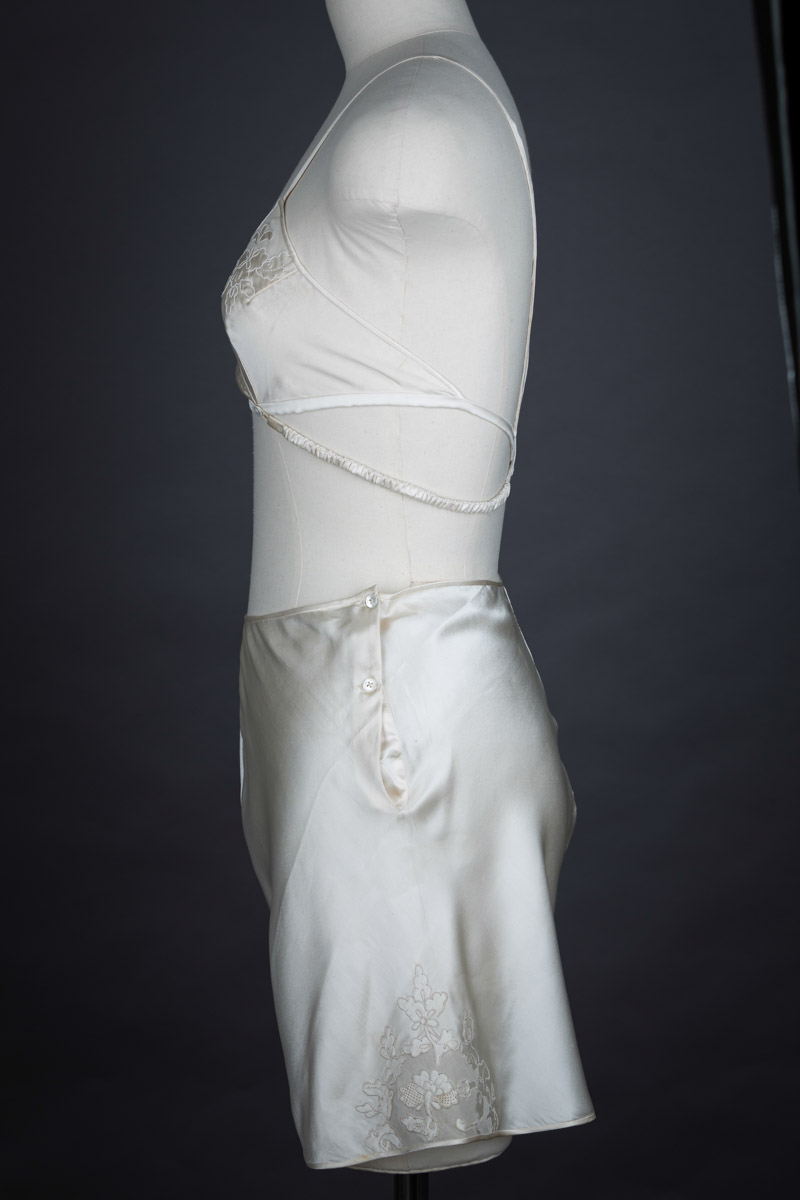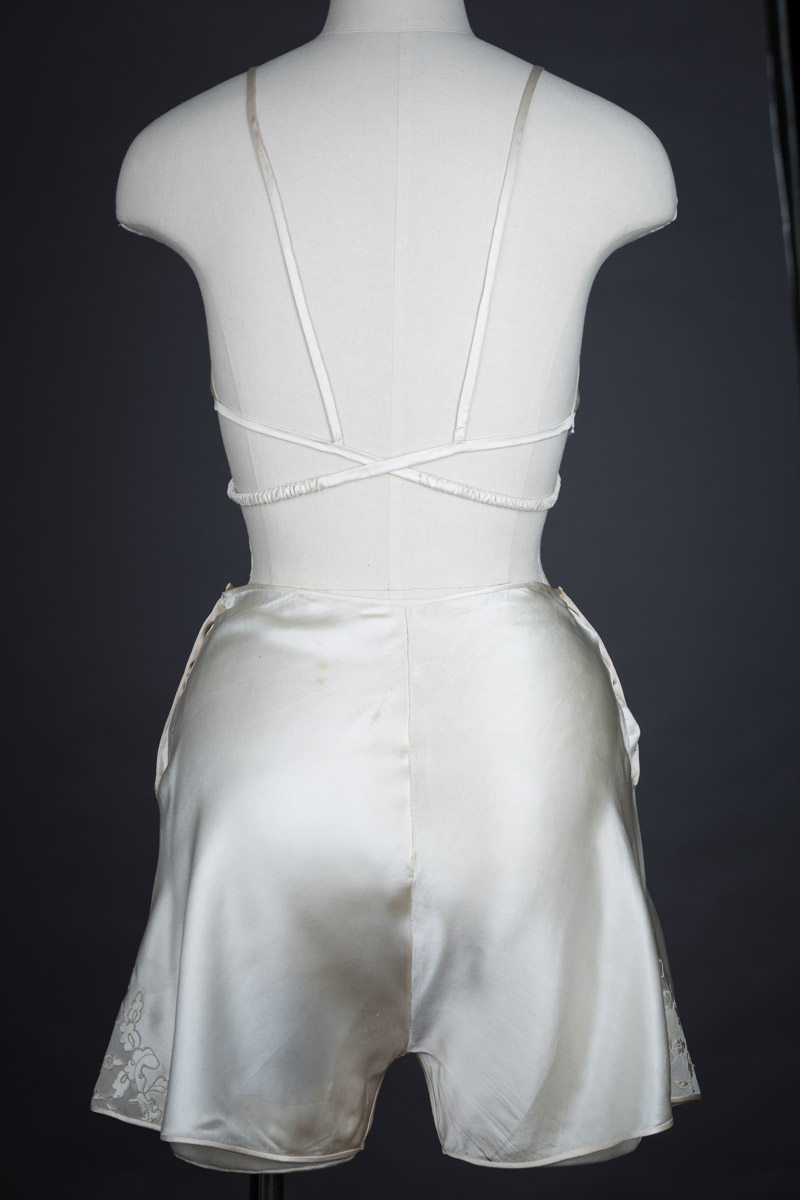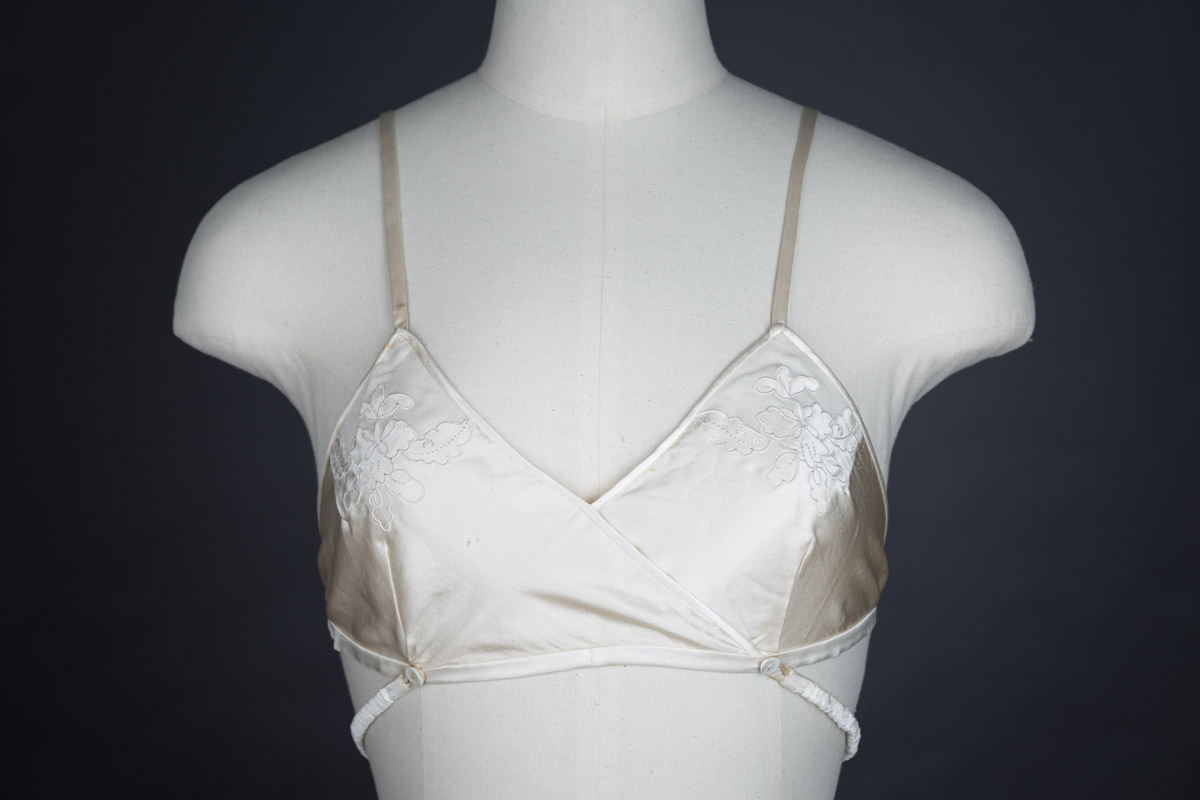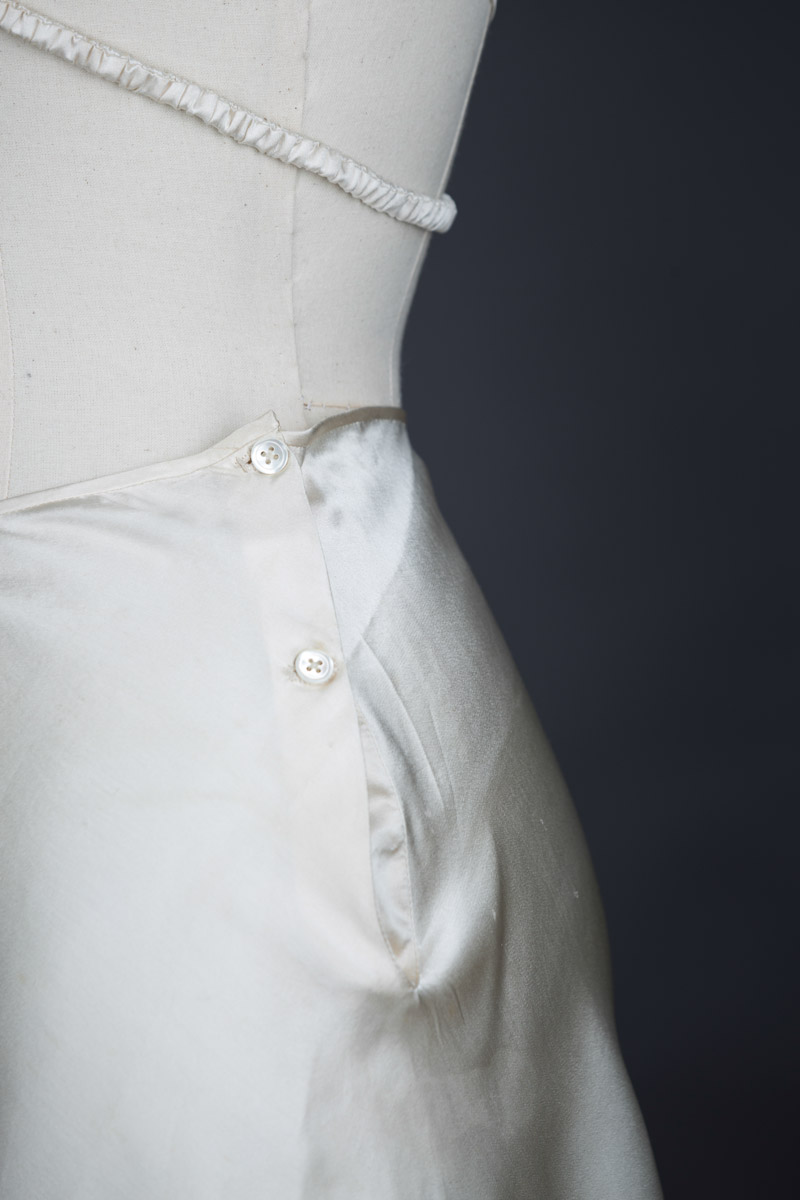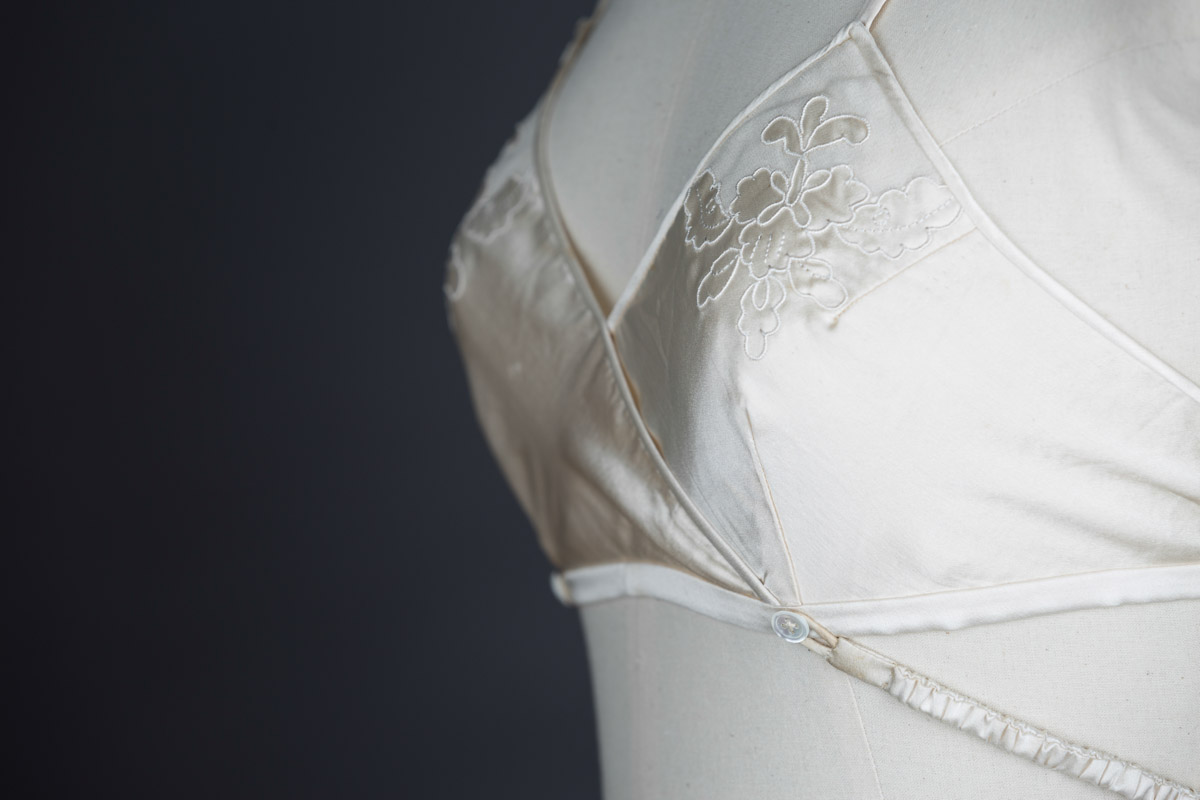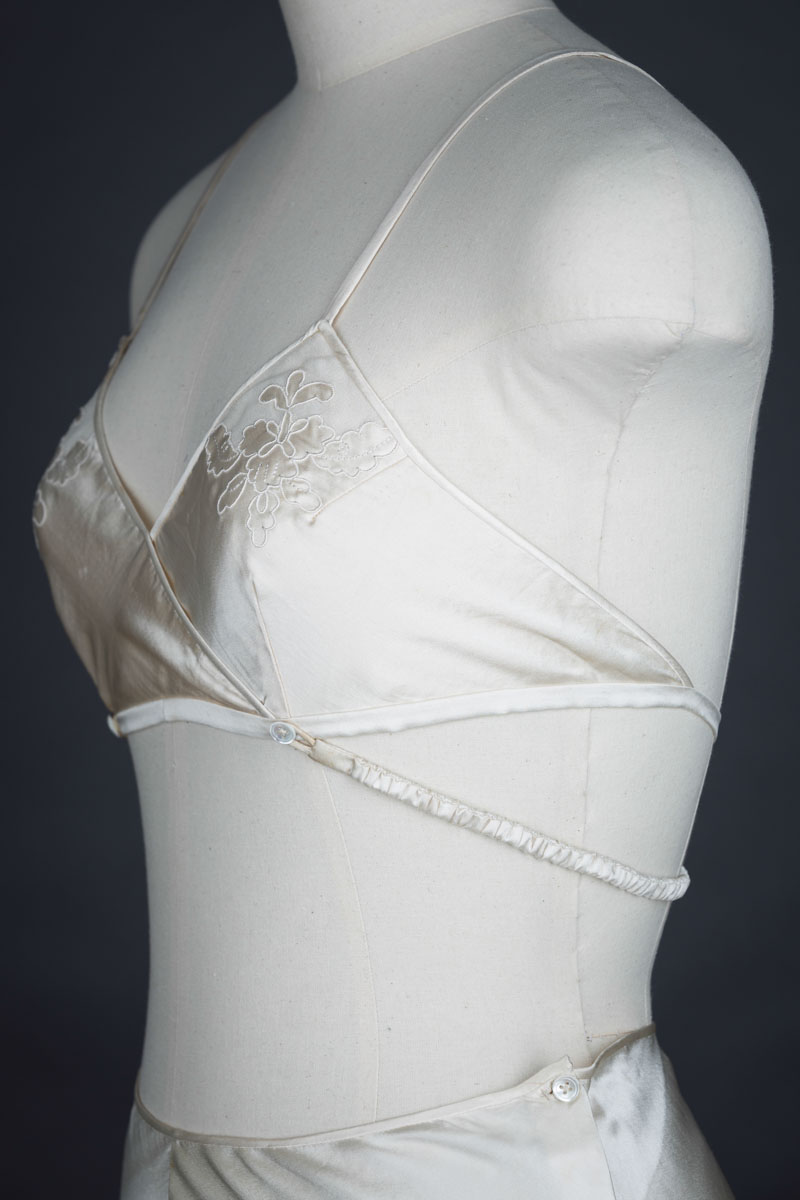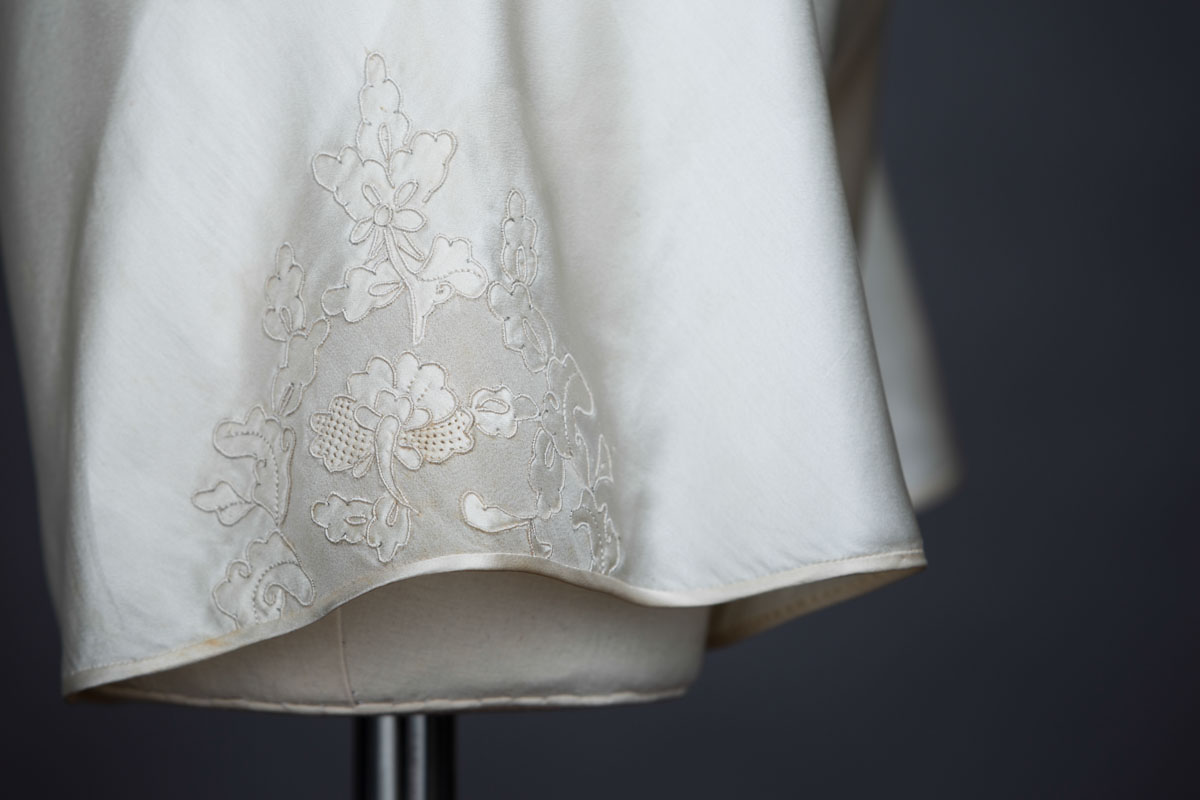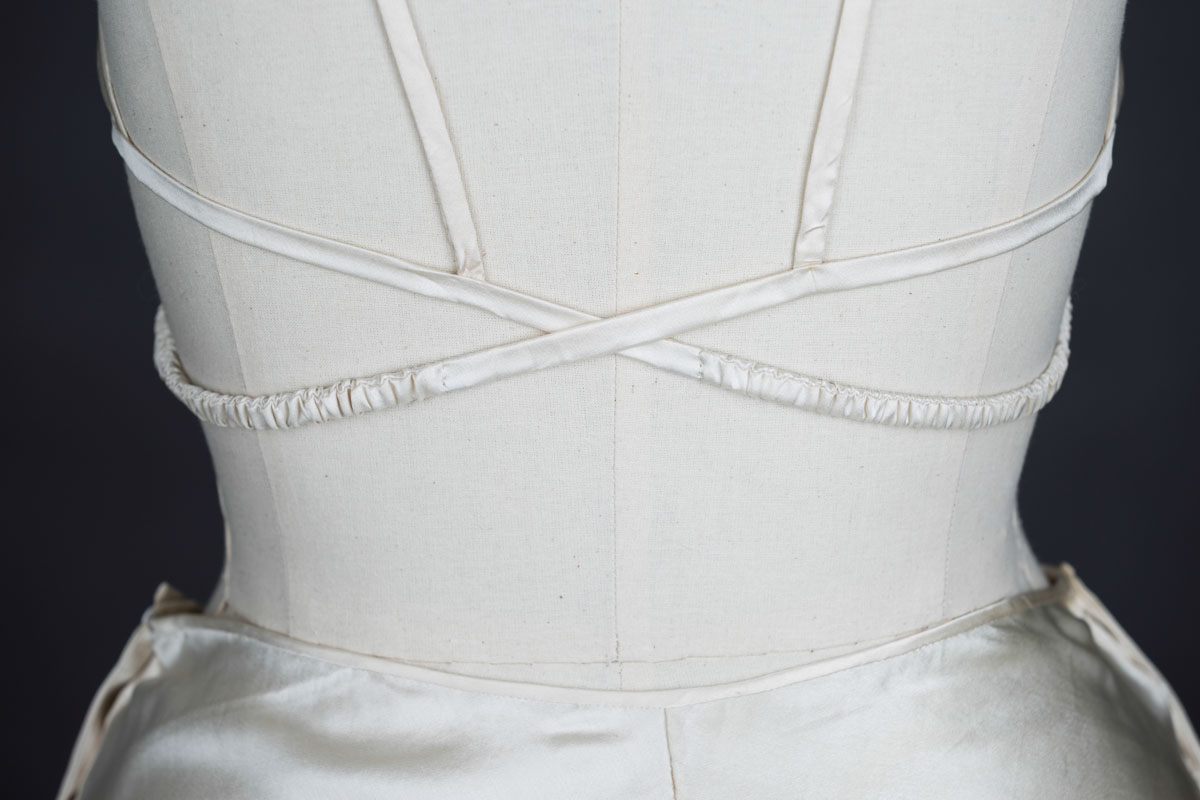Date: c. 1930s
Origin: Great Britain
Fabric: Silk satin
Brand: Custom made
A soft cup style bra based on the ‘Kestos’ bra of the late 1920s. The design was patented in 1926 and the bra was arguably one of the first commercially produced bras with separated cups. It marked the shift in ideal body aesthetic from the flattened bust of the 1920s to the more voluptuous ideal of the 1930s.
The Kestos bra is based on two lightly darted triangle cups, overlapping at the centre front. Elasticated straps cross at the centre back, fastening around the front with buttons underneath the bust point. The bra was designed by Rosamond Lilian Klin, in London, England. The Kestos bra remained popular through the 1930s and 1940s. Although the Kestos brand produced many different styles, this bra shape became generically known as ‘The Kestos’.
This particular bra is not an authentic branded Kestos, but was custom made as part of a trousseau by a seamstress for an individual wealthy client. This piece is particularly noteworthy due to the luxurious and time-consuming techniques and fabrics used. The full set is constructed with a mix of machine stitching and hand sewing. The majority of core construction, such as the darts and interior binding stitching, is done by machine, with the majority of finishing done by hand.
The bra is constructed mostly in a silk satin with small embroidered panels of silk georgette. Each cup is shaped with two small darts. The neckline and underarm of the cups are finished with a very narrow silk satin binding, with a wider binding on the underband, hand finished on the inside for an invisible exterior finish.
The bra has two shell buttons, one on the underband underneath each bust point. Narrow rouelaux shoulder straps are constructed in silk satin, which loop around the cross back straps for flexibility of fit and movement. The cross back straps partially encase elastic, as seen in the ruched areas of the garment, allowing for a more comfortable fit. These silk straps are finished with rouleaux loops to attach to the centre-front buttons.
The matching tap pants are sewn in the same silk satin with embellished silk georgette panels. The embellished panels on both the bra and tap pants have a combination of silk satin appliquéd cut work and hand worked satin-stitch embroidery. The tap pants are constructed with a mix of machine and hand stitching. The narrow French seams are stitched with an interior row of machine lockstitch, with a finishing of hand sewing. The waist and leg binding are constructed in a similar manner, with the interior construction done by machine and finishing by hand. The tap pants fasten on both the left and right hand sides with a row of two shell buttons and machine stitched plackets and buttonholes.
The tap pants mark the shift in pattern cutting and silhouette practices. The tap pant style was initially popularised in the 1920s, though these styles were usually based around rectangles with ribbon gussets. More complex shapes such as this bifurcated pair began to emerge in the 1930s, alongside gusseted shapes.
A pattern for this bra can be purchased here.
From the collection of Karolina Laskowska
